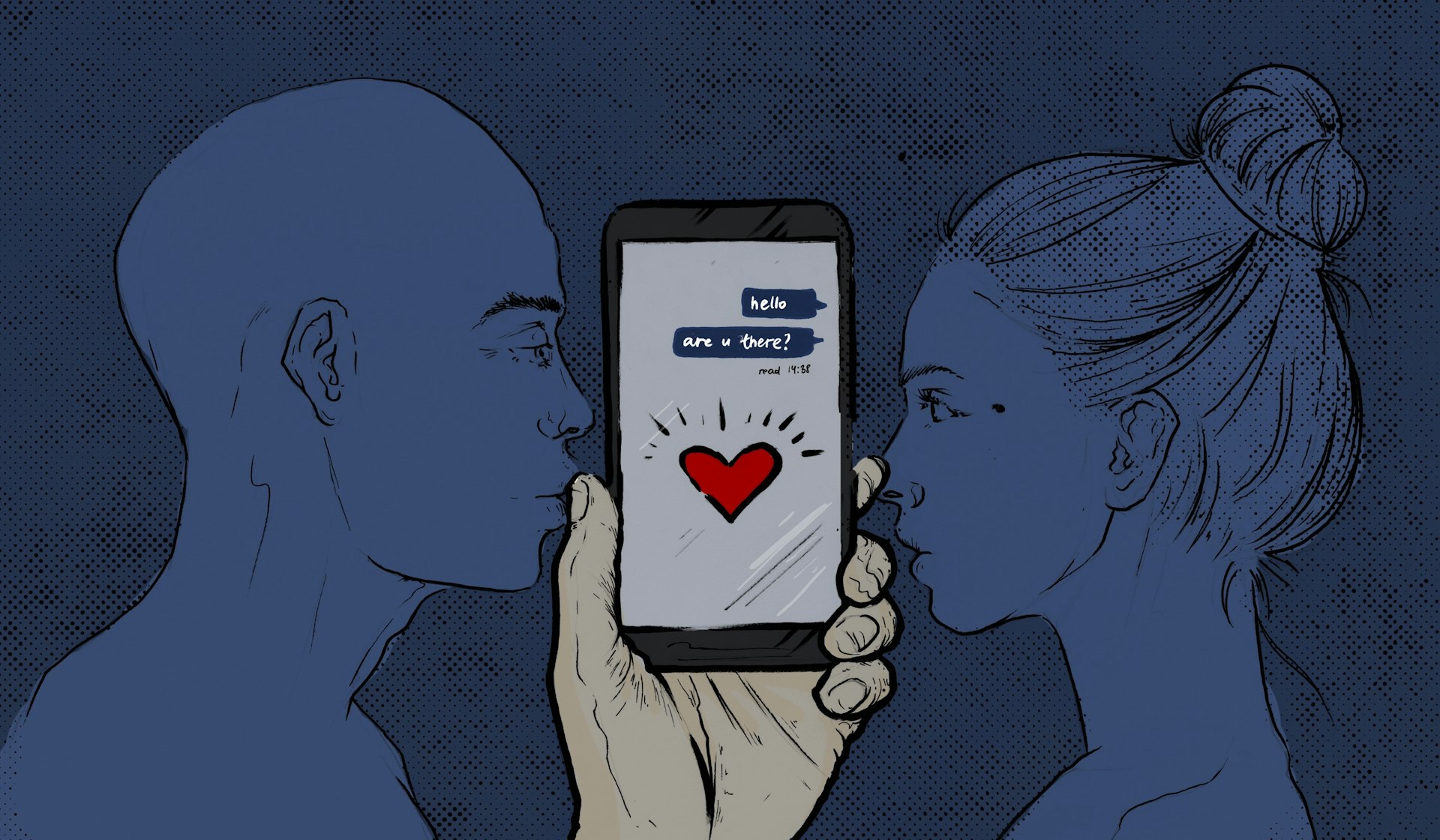
Splitting up and heartbreak in the world of social media
- Text by Emily Reynolds
- Illustrations by Sophie Mo
When my ex-boyfriend broke my heart, going to sleep was the highlight of my day. It wasn’t just because it meant I wasn’t conscious – though that was a large part of it, what with my accidentally dogged adherence to every pathetic stereotype of the recently heartbroken.
Instead, it was in large part because I dreamt about him every night. Unconsciousness was the very last place I could cling on to our shared intimacy, the dregs of which were slowly slipping away from me, calcifying forever in my head. We weren’t speaking, so it was all I had: after the break-up, he mercifully and necessarily cut all contact.
When our relationships are less easily defined, this can become more complex, complicatedly painful in a way that definite, final endings are somehow not, even if they’re far less serious. It’s here that technology can become an obstruction, not a conduit, to intimacy: in its own way, in fact, technology serves the same function as my bleak and heartbroken dreams, giving us the brief illusion that a relationship is not faltering, dying, or fading away.
I recently experienced an intense connection to someone that, as it passed from off to online life, immediately began to degrade and die. For a while, I clung to the things that had happened offline to keep me going, to convince myself that there was something more than there was. Then, I turned to our online life.
In lots of ways, our connections online are ephemeral: we talk for so many hours, sending so many thousands of messages every day, that we forget the vast majority of what we say to one another. But they also endure in a way that IRL moments don’t: they can be permanent in a way that the present moment obviously cannot.
What does this mean in practice? It meant that I text him more than I should have, reading back our conversation from the start; it meant I sent incessant screenshots to a friend, attempting to decode hidden messages where there were none to find. It meant that I played and replayed a playlist he’d made me; it meant that I looked at my LastFm to see what songs we’d listened to together in person. It was during this final act of minor obsession I realised that, had I wanted to, I could even locate exact timestamps of when we talked, kissed or had sex.
When we’re engaging in such acts of digital cartography, it can feel profound. But, in reality, this is not how intimacy works. As author Ziyad Marar recently argued when I interviewed him for a magazine, true intimacy is fleeting and short-lived, even amongst the closest of friends or most committed lovers. It simply can’t be mapped onto a timeline or pinned to a specific moment.
The rarity and potency of true human connection is intoxicating: it’s what drives so much of what we do, online and off. Why else would we keep texting someone who’s clearly no longer interested? To keep checking when they were last online, when they last opened our chat, to construct complex narratives around why they’re not engaged with us the way they once were?
But our shared digital lives can allow us to cling on to something that doesn’t exist. A playlist, an old text message, a voice note you can play over and over again – viewed with distance and hindsight, they’re just glimmers of something that in truth can’t be located anywhere in particular. Intimacy is inherently transient; our paper trails are not. Their incompatibility is powerful; it’s no surprise we get confused.
There’s a mussel shell I keep on a dresser in my bedroom, a sentimental memento from a meal I had with someone I care deeply about. Delicate, as shells are, the two halves eventually fell apart, and I briefly considered sticking them back together, an attempt to forever preserve a moment that meant something to me.
I quickly realised this would defeat the object altogether. When we dredge over our every back and forth, of course all we’ll ever get is a warped approximation of what we once felt; when we try to pin our connections down, of course they elude us completely. Intimacy is beautiful, important and joyful precisely because it’s not permanent, because it appears so rarely. We can keep the shell, yes. But we shouldn’t try to superglue it shut.
Follow Emily Reynolds on Twitter.
Enjoyed this article? Like Huck on Facebook or follow us on Twitter.
